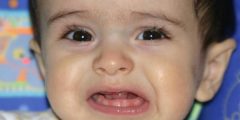mental handicap
A condition that affects the mental and social development of a person, such that the individual becomes abnormal, his intelligence is less than average, and is followed by a decrease in social and cultural performance. They appear in various manifestations, such as slowness in standing or speaking due to physical disability. Mentally disabled individuals are characterized by characteristics that differ from normal individuals, and their performance decreases. Their mental level compared to normal individuals of the same age, and the mental development of individuals with disabilities decreases in many areas, due to the decline in their mental abilities, especially in the behavioral, social, and motor areas, and it is equally deficient in all areas. In this article, we will explain the characteristics of individuals with mental disabilities.
Characteristics of the mentally disabled
Cognitive characteristics
The mentally disabled individual declines in mental ability (intelligence), as a result of the decline in his abilities that constitute general ability, and this decline becomes apparent from birth to the severe and moderate stages, where the child does not show the cognitive or mental level of the environment surrounding him, while the disabled children become clear of a slight disability in the first stage of Kindergarten or school, and the most important thing that distinguishes a mentally disabled child are the following:
- Slowness in mental development: a characteristic found in all mentally disabled individuals, as the rate of maturity and mental progress decreases compared to those of their age, and as the mental age of normal individuals increases, the increase in mental age decreases by one year for the mentally disabled, and the mind advances relative to normal people year after year. However, there are far fewer mentally disabled children than them.
- Weak attention: Lack of attention is one of the main problems for a mentally disabled child, so he needs a specialized method of dealing with them.
- Memory deficiency: This is a weakness in retrieving information that has been stored in memory, meaning their memory is short-term. Among the factors affecting the memory of mentally disabled people are:
- Delay in direct recollection, unlike normal people of the same age.
- The differences disappear in indirect recollection of the material, but the difference persists in the original material of the educational situation.
- Repetition beyond the necessary limit benefits the mentally disabled, and distracts the normal.
- The nature of the material, its difficulty, and its length clearly affect the scientific results.
- Reinforcement has a positive impact on learning outcomes.
- Cognitive deficiency: The mentally disabled individual is unable to compare and analyze, and is unable to arrange the events surrounding him in an appropriate manner.
Read also:The length of the child at birth
Physical and motor characteristics
There are clear differences between the performance and psychomotor performance of both the mentally disabled and normal people, as it increases with the degree of disability. People with severe disabilities are accompanied by many physical deformities in the head and limbs, in addition to slow motor development, which includes walking, balance, and fine skills. Disabled individuals suffer from conditions such as Epilepsy, and convulsions.
Sensory properties
Deficiencies in mental abilities affect physical abilities, which in turn affects sensory abilities, because mentally disabled people suffer from significant deficiencies in the sensory information transmitted by the sensory systems.
Emotional characteristics
One of the most important manifestations associated with mental disability is: They find it very difficult to make friends, tend to become introverted and withdrawn, and sometimes have aggressive and harmful situations. The degree of emotions varies depending on the degree of disability of the individual, the environment surrounding him, and the social experiences to which he is exposed.
Read also:Treatment for colds in children








